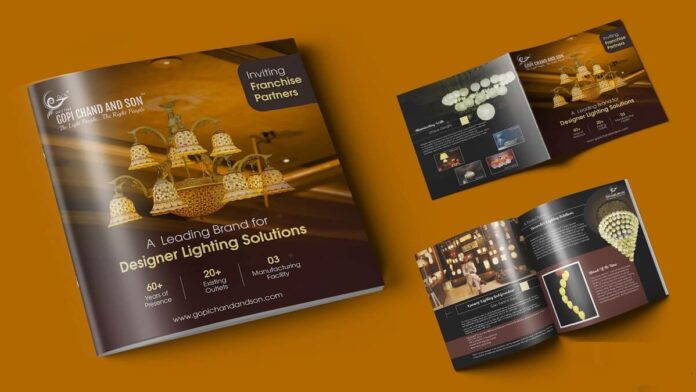A well-designed catalog printing is a valuable marketing tool that can help increase sales and brand awareness. However, producing a record requires careful planning and budgeting to meet the desired costs.
Several factors can affect the cost of a catalog, including quantity printed, page count, paper weight and grade, trim size, and postage and mailing.
Size
Print catalogs are experiencing a resurgence as retailers realize the value of direct mail and tracking technology. Plus, they deliver a more immersive shopping experience for customers.
The page count of your catalog has a significant impact on the printing costs. This is because the more pages your record has, the more press sheets it will take to create, which increases your printing and paper costs.
For cost savings, stick to a smaller trim size and lower page count. This will help keep your printing and postage costs down while still delivering an impressively-sized document your audience wants to keep on hand.
Also, work with your printer to ensure you optimize your project’s paper and print production process. Consider using one weight of composition, which will reduce your printing and mailing costs by allowing you to print more pages in fewer press readies. Also, check with your printer to see if they offer co-mailing services, which can reduce your postage costs by pooling your catalogs with others from your industry.
Cover
Catalog printing allows companies to reach customers when they’re not online. They’re a great way to highlight the features and benefits of products or services in a very visual manner. They’re also a popular marketing tool for department stores and other retailers that mail them out seasonally or regularly.
You’ll need high-resolution digital images of your selling items to create a successful catalog. These should be scanned at no less than 300 dpi to ensure they’re transparent enough for reproduction. Then, you’ll need to sort and format them into a document layout that makes sense.
If your catalog will be mailed, it’s worth looking into a heavier paper stock for added durability and protection. You can also “beef up” the heft in someone’s hand by adding a soft touch lamination to your cover, a satin sheen, and a velvety feel. Adding a coating for additional protection will increase the lifespan of your catalog, making it more likely to reach customers and drive sales.
Inside Pages
Catalogs are still alive and well in many countries and are practical tools for product marketing. However, the more pages a record has, the higher the cost of printing and production. Several factors can influence the final catalog printing costs, including page count, paper weight and grade, and finishing options.
The more pages in a catalog, the more paper and ink are needed to print them. A lower page count can reduce the cost of printing a record, as can choosing to only print on one side of the paper instead of both.
It is also essential to remember that the more custom a catalog’s dimensions are, the higher the overall cost for printing and production. Sticking to popular catalog dimensions can help keep costs low because more stock supplies are available, and economies of scale savings can be achieved.
Lastly, the finish and binding options you choose for your catalog can impact your project’s overall cost. Saddle stitch binding is the most cost-effective for records with fewer pages.
Binding
Catalog printing is experiencing a resurgence for many reasons. In addition to providing customers with a convenient way to shop, it also helps them understand your company’s values and beliefs. This, in turn, makes them more likely to buy from you over your competitors.
The type of paper you choose will also impact the cost of your catalog. The heavier-weight piece is more expensive than the lighter paper stock. Additionally, some brands require particular types of inks to perfectly match their digital renderings, which can also increase the overall cost.
Lastly, it would help if you decided how your catalog would be bound together. Saddle stitching is the most cost-effective option for most projects, but you can also opt for spiral, perfect, or hardcover binding.
Once you’ve filled in all six sections of the calculator (size, cover, inside pages, quantity, and binding style), click “Calculate.” You will see your catalog print costs appear in the right sidebar. The more catalogs you order, the lower your per-catalog printing cost. The cost of setting up the press is spread over a larger quantity.
Postage & Mailing
Catalogs are one of the best ways to market products and services because they can be physically lingering on coffee tables and remain top of mind for a long time. But it’s important to consider all aspects of a catalog project before you finalize your budget.
Paper choice is a major factor and often the most significant cost of printing catalogs. Depending on the size and page count of your record, it’s recommended that you choose a high-quality, heavy paper that’s durable and looks great. However, don’t go overboard with the paper weight – you don’t want to exceed the postal ounce limit or increase your printing costs by adding more pages than necessary.
The turnaround time you select for your catalog printing project can also impact your printing costs. Choosing a longer turnaround allows your commercial printer to print other projects alongside your catalog on the press sheets before cutting, folding, and binding, resulting in savings for you. Also, avoid ordering PMS colors if possible, as these can add to the overall cost.



